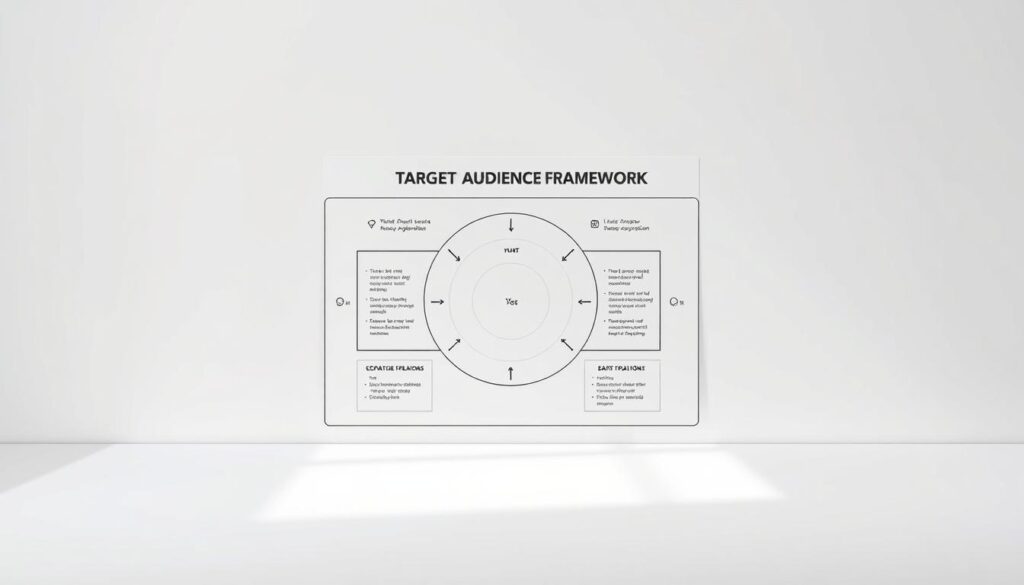Effective business expansion relies on strategic alignment between product development, sales initiatives, and customer engagement. Recent industry data reveals that 37% of organizations prioritize product-first cultures, while only 26% focus primarily on sales—a gap that highlights the need for cohesive growth strategies
High-performing companies treat prospect identification as a systematic process, blending analytics with cross-department collaboration. This approach transforms potential buyers into qualified opportunities while maintaining brand visibility across competitive markets. When executed well, it creates measurable advantages in customer acquisition and revenue acceleration.
The modern competitive landscape demands more than isolated marketing campaigns. Organizations achieve superior results by embedding prospect nurturing into every phase of their operational blueprint. Advanced tracking systems now enable precise targeting of high-value audiences, ensuring resources align with measurable outcomes at critical buyer journey stages.
Key Takeaways
- Align prospect identification with broader organizational objectives
- Leverage analytics to prioritize high-potential opportunities
- Integrate cross-functional teams for consistent customer engagement
- Balance product development with sales-focused initiatives
- Implement tracking systems to optimize resource allocation
Understanding the Fundamentals of a Go-To-Market Strategy
A robust GTM framework acts as a blueprint for converting product potential into measurable market impact. Unlike generic business plans, it aligns every operational layer – from pricing models to customer support – with market realities. Organizations that master this approach see 42% faster revenue growth than peers, according to industry benchmarks.
Key Components and Process Overview
Effective GTM strategies combine three core elements:
- Market intelligence: Deep analysis of industry trends and competitor weaknesses
- Customer journey mapping: Identification of decision-making triggers across sales cycles
- Resource orchestration: Alignment of budgets, teams, and timelines
This comprehensive guide to GTM strategies reveals how top performers integrate these components. They treat pricing models and distribution channels as dynamic elements, adjusting them based on real-time feedback.
The Importance of Market Analysis
Thorough market evaluation separates successful launches from costly misfires. It answers critical questions:
- What unmet needs does your product address?
- How do purchasing patterns vary across customer segments?
- Where are competitors over-serving or under-delivering?
Advanced teams use predictive analytics to simulate market responses before launch. Tools like those in strategic frameworks help quantify risks and prioritize high-yield opportunities. This data-driven approach reduces guesswork while creating adaptable roadmaps for scaling operations.
Defining Your Target Audience and Ideal Customer Profile
Successful audience identification begins with laser-focused segmentation. Organizations that map behavioral patterns to purchasing triggers achieve 53% higher conversion rates than those relying on basic demographics. This precision transforms generic outreach into strategic engagement.

Crafting Detailed Buyer Personas
Effective profiles combine quantitative data with psychological insights. Decision-makers analyze:
- Industry-specific workflow challenges
- Budget allocation processes
- Information consumption habits
- Risk tolerance levels
An ideal customer profile (ICP) differs from basic personas through its emphasis on actionable attributes. It identifies companies or individuals actively seeking solutions, not just potential buyers. Key characteristics include:
| ICP Component | B2B Focus | B2C Focus |
|---|---|---|
| Decision Factors | ROI timelines, team adoption rates | Lifestyle alignment, social proof |
| Pain Points | Process inefficiencies, compliance risks | Time constraints, value perception |
| Media Preferences | Industry webinars, whitepapers | Social platforms, influencer content |
Advanced teams use predictive analytics to spot emerging customer needs before markets shift. Forrester research shows companies updating profiles quarterly see 28% faster pipeline growth than annual updaters. This agility helps maintain relevance across evolving audience segments.
Behavioral analysis tools now track digital footprints across platforms, revealing hidden patterns in target audience decision journeys. These insights inform tailored messaging that addresses specific frustrations rather than generic benefits.
Crafting a Compelling Value Proposition and Messaging
Creating irresistible customer appeal begins with aligning your product’s strengths to the specific outcomes buyers seek. A well-defined value proposition acts as a bridge between technical capabilities and the emotional triggers driving purchase decisions. Companies that master this alignment see 2.3x higher conversion rates than competitors.
Aligning Product Benefits with Customer Needs
Effective messaging starts with a value matrix that maps:
- Customer pain points to measurable solutions
- Industry-specific challenges to product features
- Emotional motivators to brand promises
Advanced teams use A/B testing to validate which benefits resonate most. For example, SaaS companies often discover decision-makers prioritize workflow automation over cost savings during economic downturns.
Developing Persuasive Key Messages
Top performers craft messages that work on two levels:
- Rational proof points (ROI calculators, case studies)
- Emotional drivers (risk reduction, status enhancement)
Neuromarketing techniques reveal how specific phrases activate decision-making regions in the brain. Tools like AI-driven analysis help refine language for different buyer personas while maintaining brand consistency.
Effective go to market lead generation Tactics for B2B
Modern businesses thrive by combining content excellence with precision targeting. Nearly 68% of successful organizations use multi-channel approaches to engage decision-makers, according to recent marketing research. This method ensures consistent messaging across platforms while adapting to buyer preferences.

Revolutionizing Prospect Engagement
High-performing teams deploy layered strategies:
- Educational whitepapers paired with webinar registrations
- SEO-optimized case studies driving organic search visibility
- LinkedIn campaigns targeting specific job roles and industries
Behavioral analytics now enable real-time campaign adjustments. For example, companies using predictive lead scoring achieve 34% higher conversion rates by focusing on warm prospects. Automated email sequences keep potential buyers engaged without manual oversight.
Strategic alliances amplify results through co-branded content and shared audiences. A technology firm recently doubled qualified leads by partnering with industry influencers on research reports. These collaborations provide fresh perspectives while expanding reach.
Advanced tracking systems map customer journeys across channels. Teams identify which content types move prospects through funnel stages fastest. This data-driven approach eliminates guesswork in resource allocation.
Integrating Sales, Marketing, and Customer Engagement
Unified operational frameworks separate thriving businesses from stagnant competitors. When sales pipelines, marketing campaigns, and service teams share real-time data, companies achieve 47% faster conversion rates than siloed organizations. This synergy turns departmental handoffs into competitive advantages.
Coordinating Cross-Functional Strategies
High-performing teams use three core tactics:
- Centralized CRM platforms tracking prospect interactions across departments
- Automated lead scoring that prioritizes high-intent buyers
- Shared KPIs aligning sales quotas with marketing campaign metrics
Modern systems eliminate communication gaps between teams. For example, when marketing identifies a hot lead, sales receives detailed engagement histories – including downloaded content and webinar attendance. This context enables personalized outreach that converts 68% more effectively.
| Integration Component | Traditional Approach | Modern Strategy |
|---|---|---|
| Data Sharing | Monthly reports | Real-time dashboards |
| Lead Management | Email transfers | Automated routing |
| Customer Insights | Survey analysis | AI behavior tracking |
| Collaboration Tools | Shared drives | Integrated platforms |
Feedback loops complete the cycle. Service teams share customer complaints with product developers, while sales teams inform marketing about shifting buyer priorities. Companies using this approach see 31% higher customer retention rates.
Leveraging Digital Channels for Maximum Impact
Digital platforms now drive 78% of initial buyer research, making strategic channel optimization essential for modern businesses. Success requires balancing technical precision with human-centric engagement across search and social ecosystems.
SEO Optimization Strategies
High-performing SEO extends beyond keyword density. Technical audits identify crawl errors slowing site performance, while semantic content structures align with search intent. Local listings and backlink profiles boost domain authority, positioning brands as industry authorities.
Social Media Engagement Essentials
Platform-specific content strategies outperform generic posts by 63%. LinkedIn thrives on data-driven insights, while Instagram favors visual storytelling. Real-time analytics reveal optimal posting times and content formats, enabling teams to refine engagement tactics dynamically.
Integrated campaigns synchronize SEO efforts with social media interactions. This approach strengthens brand visibility while guiding audiences toward conversion points. Continuous A/B testing ensures resources flow to the highest-impact channels.
FAQ
What core elements make a go-to-market strategy successful?
Effective strategies combine market analysis, audience segmentation, competitive positioning, and multi-channel execution. Success hinges on aligning product-market fit with measurable customer acquisition metrics like conversion rates and customer lifetime value.
How do businesses identify their ideal customer profile?
Companies analyze historical data, conduct competitor benchmarking, and use CRM tools like Salesforce to map demographic patterns and behavioral triggers. Validated buyer personas emerge from A/B testing campaigns and direct customer interviews.
Why is messaging alignment critical for customer acquisition?
Misaligned messaging wastes 68% of marketing budgets according to HubSpot research. Precise value proposition development reduces friction in the sales funnel by addressing specific pain points through case studies and ROI-focused content.
Which digital channels drive B2B lead generation effectively?
LinkedIn Ads and Google Ads outperform other platforms for professional audiences when paired with SEO-optimized whitepapers. Retargeting campaigns using Marketo or HubSpot CRM increase qualified lead volume by 23% on average.
How do cross-functional teams improve customer retention?
Shared KPIs between sales and support teams reduce churn by 19% (McKinsey data). Regular strategy syncs using Slack or Microsoft Teams ensure consistent messaging across email nurturing sequences and post-purchase onboarding materials.
What metrics indicate strong go-to-market performance?
Track lead-to-customer conversion rates, customer acquisition cost (CAC) payback periods, and net promoter scores. Advanced teams monitor pipeline velocity and account-based marketing engagement scores using platforms like Demandbase.
Can small businesses compete with enterprise-grade strategies?
Yes. Tools like Mailchimp and SEMrush enable lean teams to automate personalized outreach while maintaining 41% lower CAC than traditional methods. Focus on niche verticals and strategic partnerships amplifies impact without enterprise budgets.



